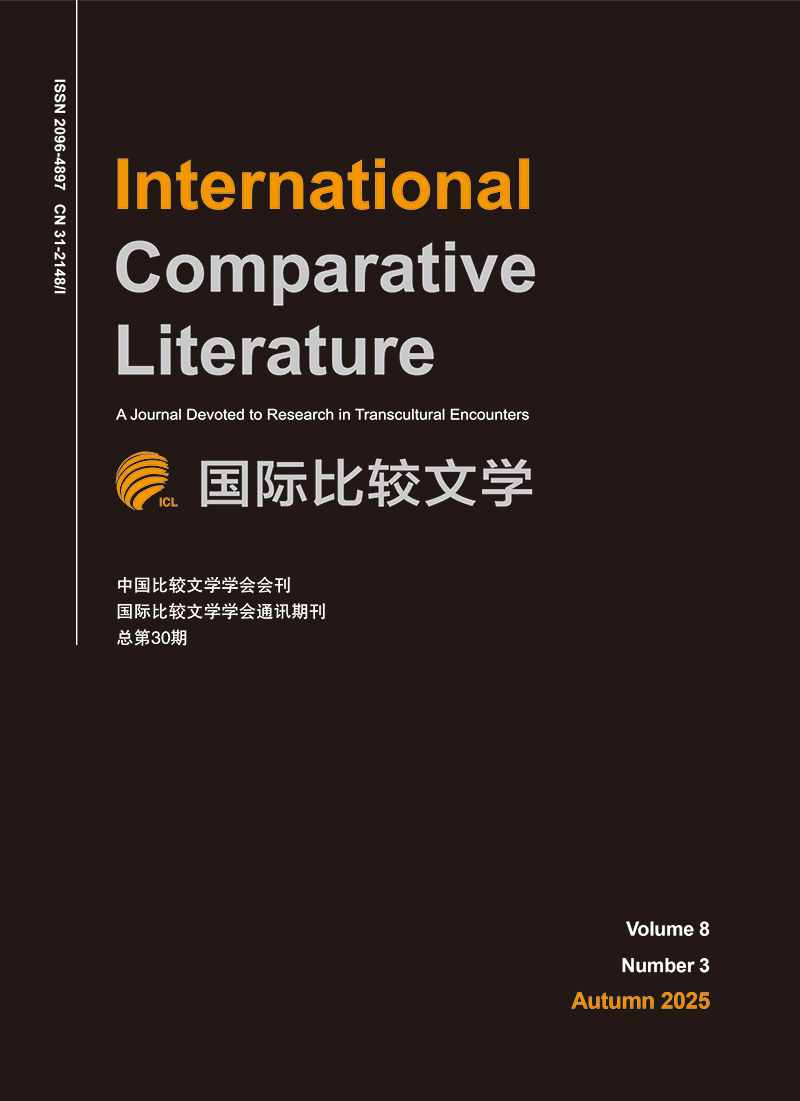The Decoding of“Xia Qi's Right Hand Holding a Ring” Narrative in Shanhai Jing—The Prehistoric Giant Wearing Jade Ornaments
-
摘要: 论文以文学人类学的视角,利用四重证据法,探讨镇原县博物馆墓葬中,史前“巨人”佩玉环和《山海经》夏启“右手操环”的文化意义。史前巨人左手腕部的墨绿色玉环,将问题引向史前的玉环与葬俗文化间的关联。通过考察多个史前遗址考古新发现情况,认识到龙山文化时代较普遍的葬礼现象是将玉镯、玉环等套在墓主人右手或手臂上。这种奇特礼仪行为模式寄托着死者魂灵升天的幻想目标和动力。以此为基础,论文转向对《山海经》中“夏启右手操环”的叙事解读。通过考古发现与历史文献相结合的方式,发现该神话叙事与龙山文化时代右手戴玉环的葬俗吻合。玉环在史前文化中具有通神和象征永生不死的意义,关于夏代开国君王“右手操环”叙事之解码长期以来真相不明,如今得到史前玉环镯葬俗的考古真相之印证。玉环镯在神话传说与考古新发现之间的相互印证,彰显了四重证据法的“物证优先原则”在中华文明探源中的独特作用。Abstract: The paper takes a perspective of literary anthropology and utilizes a four-pronged evidence method to explore the cultural significance of the prehistoric“Giant”with jade rings and the“Right Hand Grasping a Jade Ring”narrative in Shanhai Jing《山海经》(The Classic of Mountains and Seas)from the Xia Dynasty in light of Zhouyuan Xian District Museum's burial site. The use of jade rings in the burial customs of prehistoric giants,particularly on their left wrists,leads to the exploration of the connection between jade rings and burial customs in prehistoric times. By studying the new archaeological discoveries of multiple prehistoric sites,it is recognized that tying jade bracelets and rings onto the right arm of the deceased during burials was a widespread practice during the Longshan Culture period. This unique ritual behavior pattern embodies the aspiration and motivation for the soul of the deceased to ascend to heaven. By this token,the paper shifts its focus to the interpretation of the“Right Hand Grasping a Jade Ring” narrative in Shanhai Jing,which is found to match the burial customs of wearing jade rings on the right hand during the Longshan Culture period through a combination of archaeological discoveries and historical documents. Jade rings have a meaning of communication with gods and symbolized immortality in prehistoric culture. The unexplained“Right Hand Grasping a Jade Ring”narrative about the Xia Dynasty's founding monarch,which has remained mysterious since ancient times,has now been verified by the archaeological evidence of jade ring and bracelet burials during the Longshan Culture period. The mutual verification between jade rings and mythological narratives,as well as new archaeological discoveries,highlight the unique role of the“priority of material evidence”in the four-pronged evidence method in exploring Chinese civilization.
-
[1] . 方向明,周晓晶《中国玉器通史·新石器时代北方卷》,海天出版社,2014。 [2] . 南京博物院编《赵陵山(1990-1995年度发掘报告)》,文物出版社,2012年。 [3] . 南通市文联编《墨史文丛·南通童子书·南通说唱文学(非正式出版物)》,2018年。 [4] . 庆阳博物馆编《庆阳博物馆文物精品图集(非正式出版物)》,2012年。 [5] . (清)刘宝楠《论语正义》,中华书局,1990年。 [6] . 丝绸之路世界遗产官网,文化纪事|秦汉重镇·人文镇原,http://www.silkroads.org.cn/portal.php?mod=view&aid=17703,2019年 1月 30日。 [7] . 苏芳淑《史前玉镯面面观》,杨晶,蒋卫东主编《玉魂国魄——中国古代玉器与传统文化学术讨论会文集(五)》,浙江古籍出版社,2012年。 [8] . 王春法主编《礼出东方:山东焦家遗址考古发现》,时代华文书局,2019年。 [9] . 王芬,宋艳波《济南市章丘区焦家遗址 2016~2017年大型墓葬发掘简报》,《考古》,2019年第 12期。 [10] . 魏加《常山下层文化墓葬研究》,西北师范大学硕士论文,2022年。 [11] . 杨伯达《中国史前玉器史》,故宫出版社,2016年。 [12] . 杨晶《试论红山文化的玉璧、玉环》,杨晶、蒋卫东主编《玉魂国魄:中国古代玉器与传统文化学术讨论会文集(四)》,浙江古籍出版社,2010年。 [13] . 叶舒宪《玉石之路踏查续记》,上海科学技术文献出版社,2017年。 [14] . 叶舒宪《物证优先:四重证据法与“玉成中国三部曲”》,《国际比较文学(中英文)》2020年第 3期。 [15] . 叶舒宪《玄玉时代:五千年中国的新求证》,上海人民出版社,2020年。 [16] . 叶舒宪《文学人类学教程》,中国社会科学出版社,2010年。 [17] . 袁珂《山海经校注》,上海古籍出版社,1980年。 [18] . (清)张惠言《周易虞氏义导读》,华龄出版社,2019年。 [19] . 张孝光《陇东镇原常山遗址 14号房子的复原》,《考古》1983年第 5期。 [20] . 中国社会科学院考古研究所,河南省文物考古研究所《灵宝西坡墓地》,文物出版社,2010年。 [21] . 中国社会科学院考古研究所,山西省临汾市文物局编《襄汾陶寺:1978—1985考古发掘报告(第2册)》,文物出版社,2015年。 [22] . 南京博物院等编《东山村——新石器时代遗址发掘报告》,文物出版社,2016年 -

 点击查看大图
点击查看大图
计量
- 文章访问数: 253
- HTML全文浏览量: 53
- PDF下载量: 23
- 被引次数: 0



 下载:
下载:

